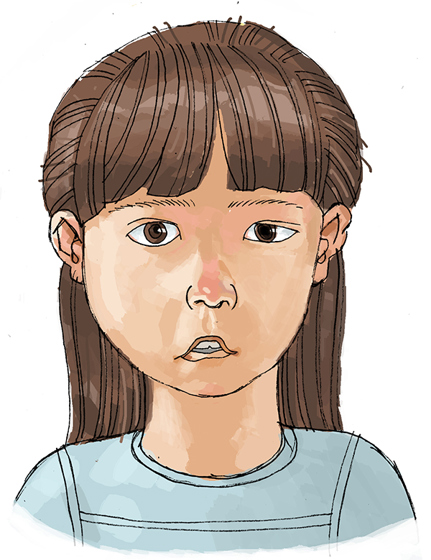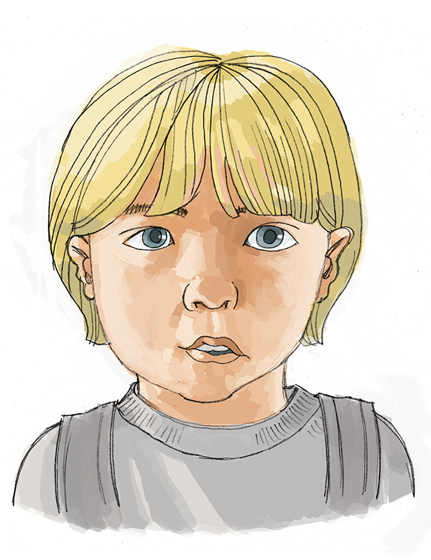Möbius syndrome
Codes
ICD-10: Q87.0W
ORPHA: 570
General information
Estimated occurrence
Very rare.Cause
General symptoms
Synonyms
Images
Characteristic facial features in Möbius syndrome:
Facial palsy, unilateral or bilateral. Strabismus (abducent palsy). Small lower jaw. Downturned corner/corners of the mouth. Inability to fully close the eye/eyes.


Orofacial/odontological symptoms
Facial palsy results in little or no facial expression. Many of these children have sucking, eating and speech difficulties owing to underdevelopment of the cranial nerves and craniofacial deformities including cleft palate and/or microglossia (underdeveloped tongue). There may be drooling problems. A post normal bite a small lower jaw and crowded teeth are all relatively common, as is the absence of some tooth buds. Studies have shown, that the saliva production may be reduced and some have a modified buffering capacity.
Advice on follow-up and treatment
- Early contact with dental services for intensified prophylactic care and oral hygiene information is essential.
- In cases of craniofacial deformities, a specialist team will be responsible for follow up and treatment.
- Regular check-ups of dental and jaw development. Orthodontist should be consulted when needed.
- Orofacial therapy and oral motor skill training should be considered.
- Speech, language and communication training are often justified.
- Feeding and swallowing difficulties are investigated and treated by a specialist team at the hospital or multidisciplinary treatment center.